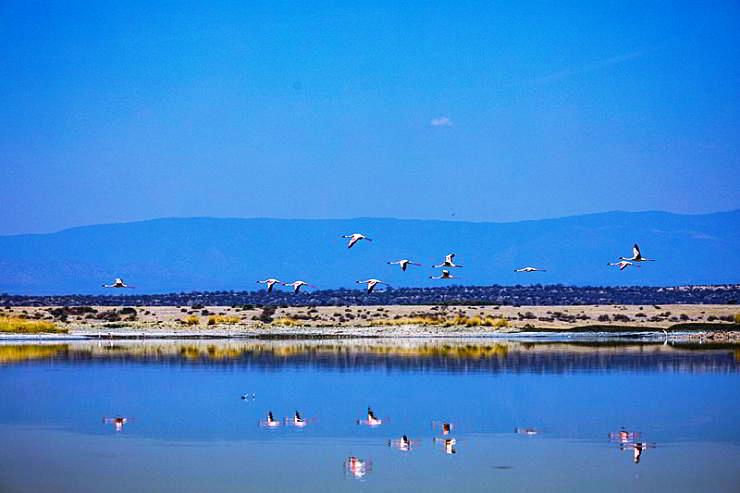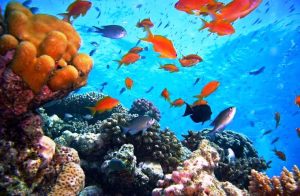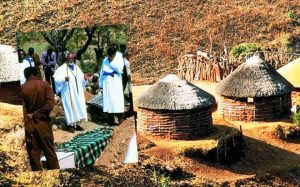In the heart of the Rift Valley, Lake Magadi, fed by natural springs, with its warm, salty waters rich in micro-organisms, is a true natural spectacle. We visited it.
From Nairobi, the distance to travel is only about a hundred kilometres. It is a rather tortuous road but it’s not in the least boring. The first stretch, which heads decidedly south, winds through the hills of Ngong, those inhabited and praised by Karen Blixen, made famous by ‘Out of Africa’, a succession of gentle reliefs lined with flourishing and orderly agricultural fields.
Little by little, as we move away from the capital, the landscape becomes more arid and barren. The inhabited centres become sparser, the little traffic disappears completely, the hills become depopulated, and some solitary Masai shepherds can be glimpsed on the horizon with their herds as you proceed on a pothole-studded track in an open landscape and wrapped in torrid heat. Finally, at the end of the road we arrive in Magadi, pass through the anonymous town and look out onto a natural terrace that seems to be suspended on a rainbow.
The view is an explosion of colours that leaves us speechless. Red, pink, orange, violet, green, yellow. Fiery tones and strong contrasts. All in an unreal silence. It looks like a painting by Matisse. But it is a natural painting, the result of a chemical alchemy that has created a magical place here in the heart of the Rift Valley.
Extended over one hundred square kilometres, Lake Magadi is an alkaline basin fed mainly by natural springs of hot and salty water. It is surrounded by volcanic hills that dissolve large quantities of sodium carbonate in its waters, like the nearby Lake Natron, located just across the border with Tanzania, with which in ancient times it formed a single large lake.
The characteristic scarlet colour that unites both basins is due to the presence of alkaline rocks and small bacteria that live in the waters rich in salts and carbonates. The lack of outlets and the evaporation of the water increases the concentration of salts to such an extent that its surface is completely covered by a layer of crystallized soda, which in some parts of the basin extends several meters deep.
The different temperatures and salt densities produce areas of different colours that together create an extremely fascinating visual effect. It goes from pale pink to fiery red, depending on the quantity of microorganisms fed by the salt, like a sort of kaleidoscope that changes continuously throughout the year.
During the dry season, 80 per cent of the lake is covered by soda. At this time of year, the lake is dotted with thousands of waders and pink flamingos, among the few animal species able to live in this extreme habitat, which feeds on the algae and microorganisms that live in its waters.
Only one fish species, the cichlid Alcolapia Grahami, is present in the lake basin. But the only thing that interests humans in Lake Magadi is the bicarbonate that is extracted on its shores and processed in various factories in the city of the same name, where it is refined and processed into pharmaceutical products. (Marco Trovato/Africa) – (Photo: Lake Magadi. CC BY-SA 4.0/Antony Trivet)







